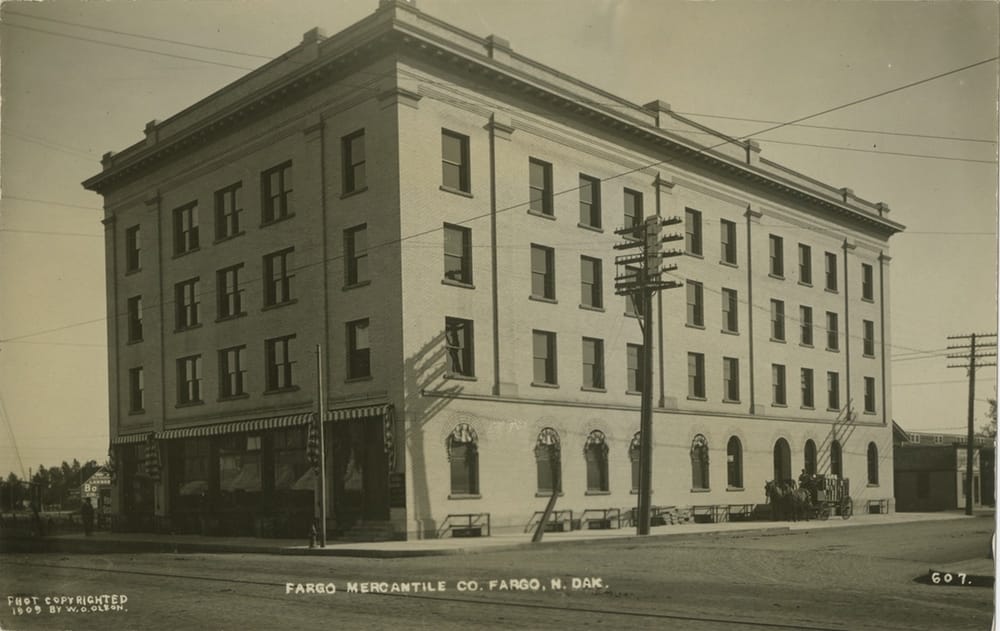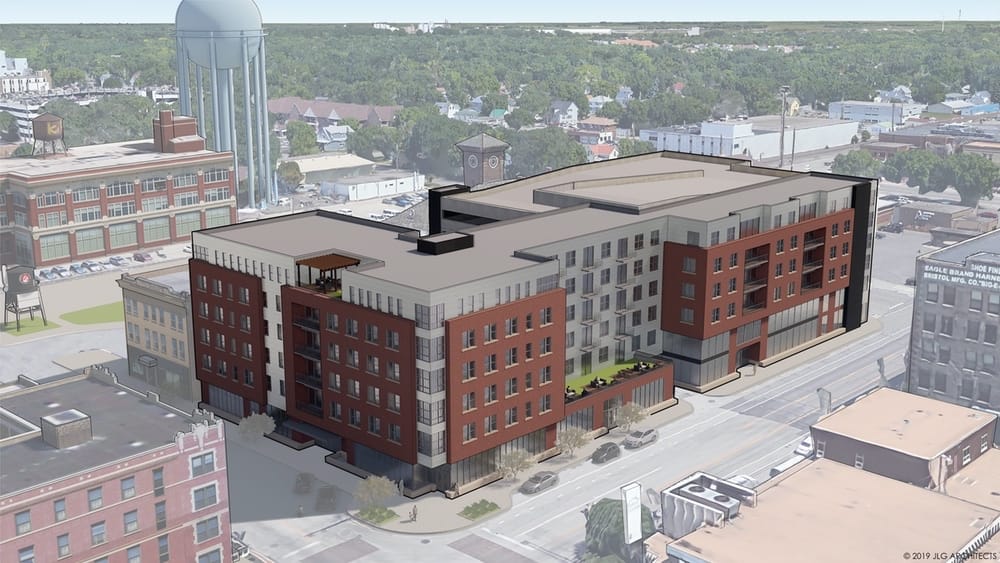Photos by Dan Francis
Imagine your office in downtown Fargo, right in the heart of the most active sidewalks in North Dakota. The neighborhood is bursting with dozens of restaurants, independent retailers, arts hubs and coffee shops. But a gnawing thought keeps you from conjuring the vision of closing a big deal or building business partnerships over a terrific lunch that you walked to…PARKING.
Where will I conveniently leave my car so I can enjoy the unique walkability downtown Fargo offers?
In October 2019, Fargo City Commissioners took the next big step in ensuring downtown’s parking supply stays ahead of its demand. Commissioners voted to approve the recommendation of the City of Fargo Parking Commission to begin construction on a 369-space parking ramp, surrounded by mixed-use private development, at the corner of Broadway and Fourth Avenue North. Construction is expected to begin in November 2019 and wrap up in September 2020.
The project has been dubbed Mercantile, in homage to the four-story brick structure, which stood on the site from 1909 until it was demolished in 1966 after sitting vacant for six years. The building was used exclusively for the Fargo Mercantile Company, a wholesale grocer established in 1895.
The Mercantile project represents a public-private partnership between the City of Fargo, Kilbourne Group and another private developer, who intends to add about nine owner-occupied housing units to the project. Plans for the mixed-use building wrapping the parking garage include space for a Fargo Police Department substation, a parking office, public restrooms, approximately 100 apartments for rent and 15,000 square feet of ground-floor commercial space. When finished, the 369 parking spots become part of the City’s supply for public parking.
Fargo, like many cities across the nation, has a storied history when it comes to its approach to parking.

Fargo was founded in 1871, long before cars influenced its development patterns. Downtown grew, unfettered by parking needs for about 75 years. In the mid-20th century, vehicle parking was becoming a necessity for any business to survive. One way to add parking to downtown Fargo was to demolish existing buildings to create surface-level parking.
On the site of Roberts Commons (RoCo), Fargo’s first mixed-use parking garage at Second Avenue North and Roberts Street, stood an ornate Carnegie Library from 1903 to 1968, when it was demolished to create more parking. The site served the city as a surface parking lot until the public-private partnership was established to build RoCo in 2015.
In 1999, the City of Fargo commissioned a parking study to find a better way to plan for growth in parking needs in downtown Fargo. As a result of the study, Fargo established a Parking Commission to “manage, provide, promote and maintain safe, convenient, accessible, attractive and reasonably-priced parking facilities that will meet the need of downtown businesses, employers, residents and visitors.”
As downtown continued to change, Fargo followed up with additional parking studies in 2003, 2007, 2012 and most recently 2015. The 2015 study came to three main conclusions:
- As development continues, there is a parking deficit in the downtown Fargo core.
- Strategically placed garages will catalyze private investment and development in the downtown core.
- Parking structures are opportunities for public-private partnerships and joint ventures on mixed-use projects.
The 2015 study identified the Mercantile site at the corner of Broadway and Fourth Avenue North as a strong candidate for a new mixed-use garage. The site currently offers 93 surface spaces and is large enough to accommodate adjacent private development, which will generate new taxes and maintain the aesthetic and walkability of downtown.
At the release of the 2015 parking study, there were 3,600 public parking spaces in downtown Fargo. Since then, more than 800 spaces have been added, with another 369 spaces in the works at Mercantile.


So, how are new parking garages in downtown Fargo paid for?
In Fargo, City-owned garages are paid for through a mix of operating revenues from existing City parking garages and lots, and from new taxes created through private development in the City’s Tax Increment Financing (TIF) districts. The TIF district is a way for the City to capture the new value created by private development and earmark it for costs incurred to make that development possible, such as building public parking. Once the construction debt is paid off, the TIF closes and the increased taxes are again redistributed to all the taxing entities. Operating revenues for all City-owned parking are kept within the budget of the parking authority and used to maintain the infrastructure and build reserves to continue to build parking as needed. In this scenario, no general fund money is used to build parking in downtown Fargo. As a self-sustaining and self-funding system, the parking authority is budgeted to make $56,000 in the year 2020.
Much like Fargo’s new $30 million overpass at 64th Avenue South, structured parking is a vital infrastructure asset that allows the continued growth and development of Fargo. Downtown is in an era of transitioning from surface parking lots to structured facilities, which stack the cars up and frees up room for more mixed-use development, which will pay dramatically more in taxes than the surface lots have for the last 50 years.
As stated in the 2015 parking study:
“Today, the urban core of downtown is dynamic and growing. To continue to make these strides, it will be important that the downtown parking resources be managed and expanded in a manner to match the quality and growth of Fargo’s downtown. Downtown is ready to move to the next level, building on the solid foundation of diverse investment in the fabric of Fargo’s downtown.”








